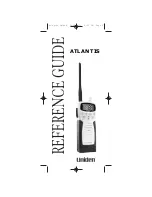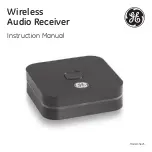
NPX138N Series Panel Mount FM Transceiver
SM41 Installation and Operation Manual
Section 2 Rev: 1.00
Issue 4
Page 2-3
ENG-FORM: 805-0121.DOT
CONFIDENTIAL AND PROPRIETARY TO NORTHERN AIRBORNE TECHNOLOGY LTD.
permit the unit to be removed from the panel for easy access to all side adjustments. Do NOT mount the
unit until all adjustments have been performed.
Maintain wire segregation and route wiring in accordance with the original aircraft manufacturers
Maintenance Instructions. Coaxial cables shall be routed separately from existing wire bundles in the
aircraft to minimize electromagnetic coupling effects.
Unless otherwise noted, all wiring shall be a minimum of 22 AWG, except power and ground lines, which
shall be a minimum of 20 AWG. Reference the Interconnect drawing for additional specifications. Check
that the ground connection is clean and well secured, and that it shares no path with any electrically noisy
aircraft accessories such as blowers, turn and bank instruments or similar loads. Power to this unit must
be supplied from a separate circuit breaker or fuse (fast blow), and not attached to any other circuit
breaker without additional protection. Verify that the selected circuit breaker size and wire gauge are
adequate for the installation using the techniques specified in AC43.13-1B Change 1, Paragraphs 11-47
through 11-51 and 11-66 through 11-69.
2.4.5
Antennas
Correct antenna placement and mounting is critical in order to achieve the best possible performance. In
general, keep all antennas as widely separated as possible and clear of any large airframe obstructions.
Installation of the antenna should be in accordance with the original aircraft manufacturer’s instructions
for continued airworthiness or AC 43.13-1B Change 1, chapter 11, section 15 and AC 43.13-2A chapter 3.
If possible, the antenna should be located a minimum of 12 ft from aircraft navigation receiver antennas
and a minimum of 4 feet from aircraft communications and ELT antennas. Be careful not to choose
separations that closely approximate ¼, ½ or whole-number multiples of the navigation or
communications system wavelength.
Note
: Avoid any placement that puts antennas of like frequencies close together.
Bottom mounted antennas will perform best in flight, but poorest on the ground during testing. Antennas
may be severely degraded by 'masking' effects of the fuselage or stabilizers, and generally give best
performance when bottom mounted.
To reduce interference from rotor modulation and other undesirable stimuli, any blade or whip antenna
must be surrounded by a ground plane surface (metallic, grounded material) with a radius equal to or
greater than the height of the antenna. Under the same conditions, the antenna is also much less likely to
cause interference to other aircraft systems (e.g. coupling into audio system, fluctuations in instrumentation,
etc.). Poor grounding will result in severe reflected power and high levels of RFI throughout the airframe.
Avoid antenna locations that will become fouled with oil, water, fuel or dirt, as this will degrade
performance. Roof mounts (in close proximity to rotor blades) are permissible.
2.4.6
Mechanical Mounting
Installation of the transceiver should be in accordance with the original aircraft manufacturer’s instructions
for continued airworthiness or AC 43.13-1B Change 1, chapter 7, sections 2 to 7 and AC 43.13-2A, chapter
2. Pr 35 Dzus rail or equivalent may be used.
Mounting the NPX138N requires a Dzus rail assembly with an opening width of 127 mm (5 inches) and a
front clearance width of 146.1 mm (5.75 inches). Height requirement is 47.6 mm (1.875 inches). Refer to
the mounting drawings and unit mechanical specifications to determine proper clearance dimensions. Be
sure that adequate clearance is allowed for the cable connections to each unit.
The document reference is online, please check the correspondence between the online documentation and the printed version.












































